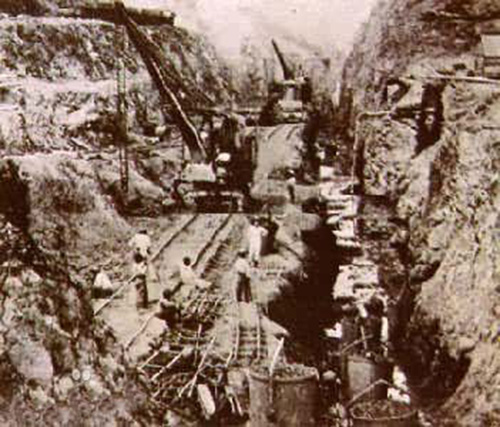Retrospect of the history of Panama Canal
The background of opening the Isthmus of Panama

The earliest mention of a canal across the Isthmus of Panama dates back to 1534, when Charles V, Holy Roman Emperor and King of Spain, ordered a survey for a route through the Americas that would ease the voyage for ships traveling between Spain and Peru. Such a route would have given the Spanish a military advantage over the Portuguese. In 1788, Thomas Jefferson suggested that the Spanish should create it since it would be a less treacherous route than going around the southern tip of South America, which tropical ocean currents would naturally widen thereafter.During an expedition from 1788 to 1793, Alessandro Malaspina outlined plans for its construction.
Given the strategic location of Panama and the potential offered by its narrow isthmus separating two great oceans, other trade links in the area were attempted over the years. The ill-fated Darien scheme was launched by the Kingdom of Scotland in 1698 to set up an overland trade route. Generally inhospitable conditions thwarted the effort, and it was abandoned in April 1700.
In 1849, the discovery of gold in California created great interest in a crossing between the Atlantic and Pacific Oceans. The Panama Railway was built to cross the isthmus, and opened in 1855. This overland link became a vital piece of Western Hemisphere infrastructure, greatly facilitating trade and largely determining the later canal route.
An all-water route between the oceans was still seen as the ideal solution, and in 1855 William Kennish, a Manx-born engineer working for the United States government, surveyed the isthmus and issued a report on a route for a proposed Panama Canal.His report was published in a book entitled The Practicality and Importance of a Ship Canal to Connect the Atlantic and Pacific Oceans.
In 1877 Armand Reclus, an officer with the French Navy, and Lucien Napoléon Bonaparte Wyse, two engineers, surveyed the route and published a French proposal for a canal.French success in building the Suez Canal, while a lengthy project, encouraged planning for one to cross the isthmus.
HEADLINES
- Do shipping markets want Biden or Trump for the win?
- All 18 crew safe after fire on Japanese-owned tanker off Singapore
- Singapore launching $44m co-investment initiative for maritime tech start-ups
- Cosco debuts Global Shipping Industry Chain Cooperation Initiative
- US warns of more shipping sanctions
- China continues seaport consolidation as Dalian offer goes unconditional